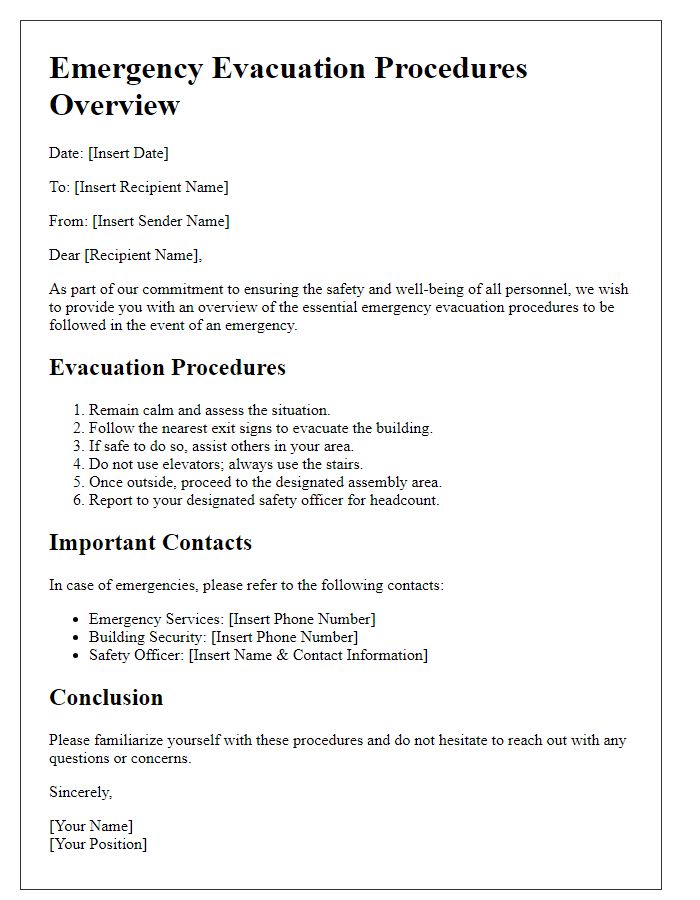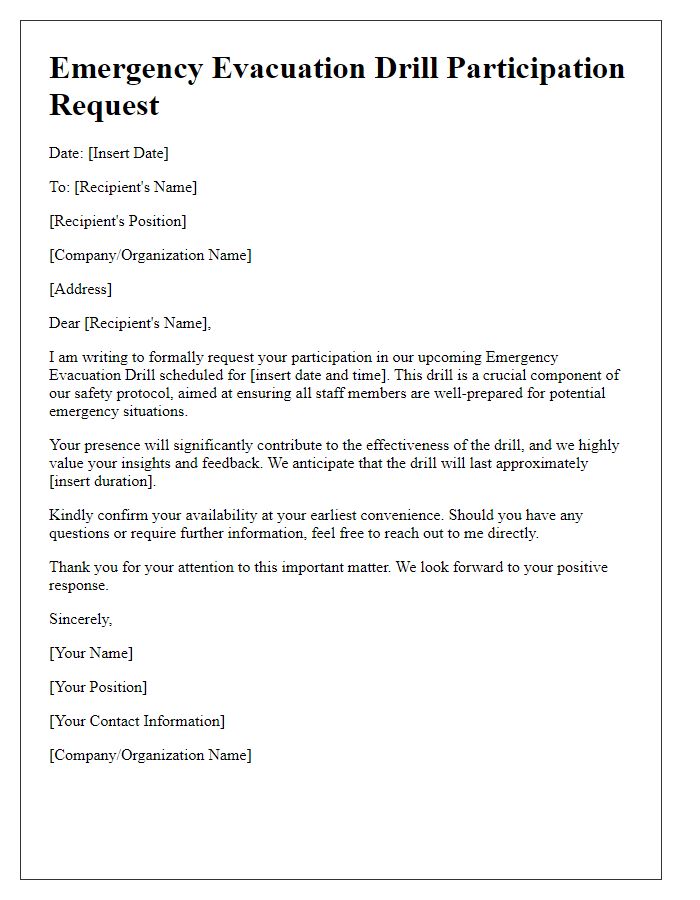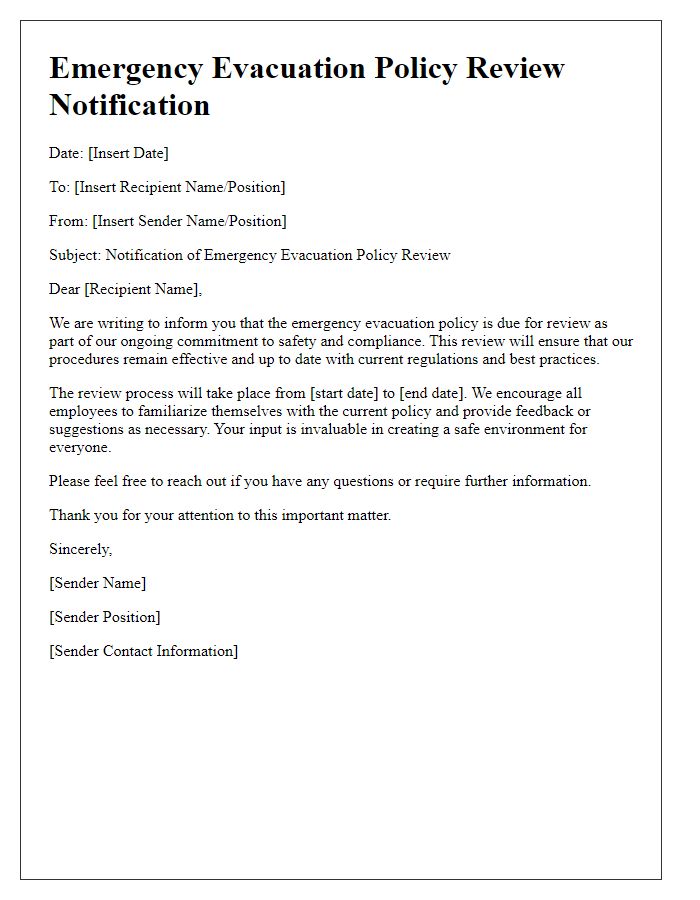Emergency situations can arise when we least expect them, making it crucial to be prepared and informed. In this article, we'll delve into essential emergency evacuation procedures that everyone should know to ensure their safety and the safety of others. Understanding these protocols not only equips you with the knowledge to act swiftly but also fosters a culture of preparedness within your community. So, let's dive deeper into the steps you need to take for an effective evacuationâread on!

Contact Information and Emergency Numbers
In the event of an emergency evacuation, having access to reliable contact information and emergency numbers is essential for ensuring safety and coordination. Local emergency services, such as fire departments and medical facilities, typically can be reached by dialing 911 in most regions of the United States. For specific situations, such as chemical spills or hazardous material incidents, individuals should have the number for the local poison control center, which varies by state but is crucial for immediate assistance. Additionally, internal contacts, including the building manager or safety officer, should be readily available; these individuals are responsible for overseeing the evacuation procedures and ensuring everyone arrives at designated safe zones. For large organizations, it may also be beneficial to have the regional disaster response team's contact number, as they provide additional support during emergencies. Making sure that all personnel have this information accessible can greatly enhance response effectiveness in critical situations.
Evacuation Routes and Assembly Points
Emergency evacuation procedures are crucial for ensuring safety during unforeseen events. Clear evacuation routes, prominently marked and well-lit, direct individuals to designated assembly points, such as parking lots or open fields, ensuring minimal congestion. For example, in a high-rise building, the main staircase serves as the primary exit, while elevators remain non-functional. Assembly points, like the grassy area outside Building A, allow for accountability through headcounts. In large events, such as concerts held at Central Park, marked paths lead attendees to safety, while emergency personnel guide the flow. Regular drills, conducted quarterly, familiarize occupants with the process, enhancing preparedness and reducing panic in real emergency scenarios.
Roles and Responsibilities of Staff and Emergency Teams
Emergency evacuation procedures are critical for ensuring the safety of all personnel during unforeseen events. Each staff member plays a vital role, with responsibilities tailored to their position. Team leaders must conduct regular drills, ensuring all employees are familiar with exit routes and designated assembly locations, such as the designated safe zone at the north parking lot. Emergency response teams, trained in first aid and crisis management, must remain alert and ready to assist injured individuals, following protocols established by local emergency services. Communication is key; staff must promptly report any emergencies to the control center, while designated club communication officers disseminate updates to all personnel. Regular training sessions every quarter reinforce these roles, preparing staff to act quickly and efficiently in times of crisis.
Communication Protocols and Alerts
Emergency evacuation procedures are critical for ensuring safety during unforeseen events, such as natural disasters or building emergencies. Effective communication protocols must be established to relay alerts promptly, including alarms, public address systems, and mobile notifications. For example, in high-rise buildings during fire emergencies, a well-defined alert system, like the National Fire Protection Association (NFPA) standards, can enhance response times and inform occupants of safe evacuation routes. Utilizing two-way radios among emergency response teams, such as local fire departments (e.g., New York City Fire Department), ensures coordination and swift response. Regular drills, in accordance with Occupational Safety and Health Administration (OSHA) guidelines, can improve familiarity and reduce panic, reinforcing the importance of following clear communication channels during actual emergencies.
Specific Safety Measures and Equipment Usage
Emergency evacuation procedures must be clear and systematic to ensure the safety of all individuals in a facility. Specific safety measures include identifying designated evacuation routes, marked clearly with illuminated exit signs, and ensuring that fire extinguishers are accessible and fully operational. Equipment usage plays a crucial role during emergencies; for instance, the use of evacuation chairs for assisting individuals with mobility issues is essential in multi-story buildings. Regular drills, conducted at least twice a year, reinforce the effectiveness of these measures and improve response times in case of actual emergencies. First aid kits, strategically placed throughout the building, should be stocked with necessary supplies, such as bandages, antiseptics, and emergency contact information. Clear communication of these procedures through comprehensive training sessions will enhance preparedness and foster a culture of safety among all occupants.













Comments